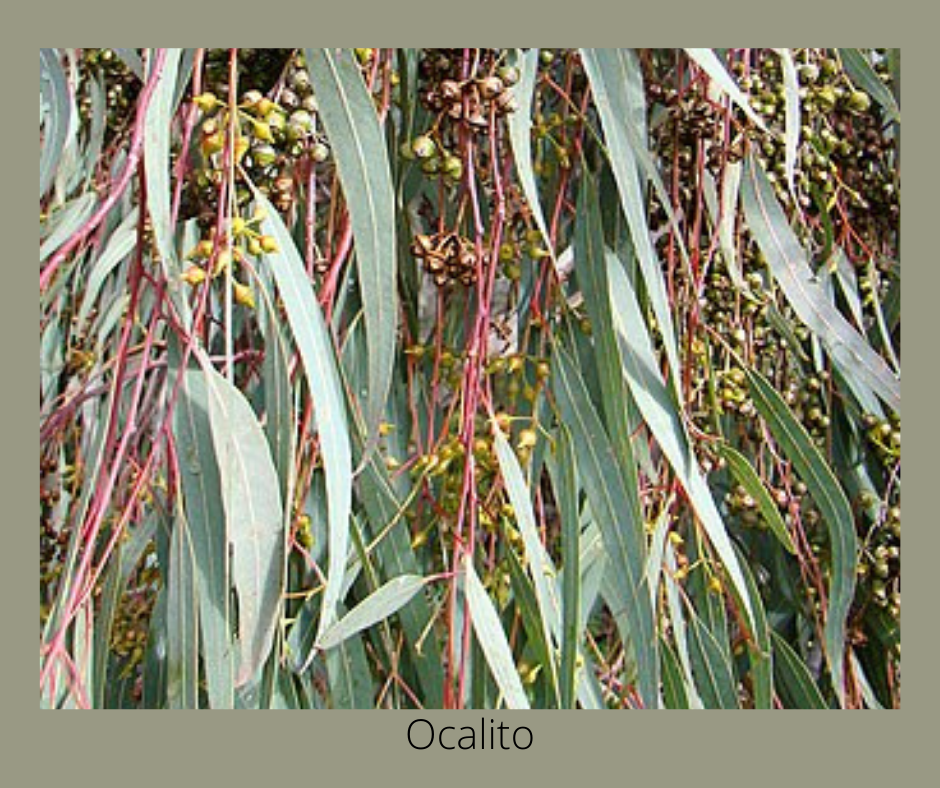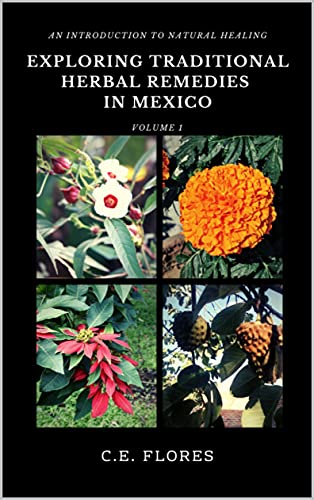
One day, my husband and I were cruising around Cerano looking for, I forget what, and suddenly he stopped the motorcycle, hopped off, and pulled some leaves off a shrubby tree, saying they were ocalito leaves and he needed them for seasoning. Well, all righty then. I really couldn’t identify the leaves, and he didn’t have any more information on them, so time went by.
Then another day, I was perusing the herb section in one of the herb stores in town and saw a bag of leaves like the ones my husband had picked, but they were labeled “eucalipto.” Eucalyptus? But surely, eucalyptus wasn’t a tree that grew in Mexico. Time for some research.
It turns out that eucalyptus trees were brought into Mexico in the late 1800s/early 1900s, predominately the Eucalyptus camaldulensis (rojo) and Eucalyptus tereticornis (azul) varieties. Commercial plantations were established but not well regulated. The trees escaped their growing confines and are now considered invasive species. Other varieties found in Mexico include Dólar de plata (Eucalyptus cinerea) and Eucalipto blanco (Eucalyptus globulus).
While ocalito is the name used in central Mexico, other common names are alcanfor, calipto, árbol de la fiebre, gigante ócalo, calistro, tzon tzko nasi in Oaxaca, ntajine in popoloca, an indigineous language spoken in Puebla.
Ocalito is commonly used in Mexican herbalism for fever reduction, colds, asthma, and respiratory ailments.
Eucalyptus camaldulensis bark extract is antiviral, antibacterial, antifungal, antioxidant, and insecticidal. It is also effective against atherosclerosis and hyperlipidemia. Leaf extracts contain antimicrobial, antimalarial, anticancer, antibacterial, and antimutagenic properties. The essential oil reduces tooth biofilm formation and effectively reduces tooth decay and cavities. Vaginal cream that contains the essential oil has been shown to prevent and treat Trichomoniasis because of its anti-parasitic activity.
Both Eucalyptus torelliana and Eucalyptus camaldulensis effectively treat tuberculosis and the persistent cough associated with that illness and other respiratory issues.
Eucalyptus globulus demonstrates strong antimicrobial activity. Eucalyptus tereticornis leaf extracts are antimicrobial, antioxidant, hypoglycemic, and may be beneficial in combating obesity.
Ocalito leaf infusions are given for resfriado (colds), bronquitis, and asthma. A stronger infusion is used for a mouth rinse. Steam inhalations are prescribed for respiratory congestion and cough. A wash from the bark is made for vaginitis, urinary tract infections, and wounds.
As a rub for colds and flu, combine ocalito, ruda (Ruta graveolens), and romero (Salvia rosmarinus) in a liter of arguardiente (alcohol). Allow it to infuse the alcohol. Before using, warm it, then shake. Apply over the entire body in the evening. Drink the following hot infusion and send the sick person to bed.
Ocalito and Ocote Infusion for the Flu
- 1 stick of canela (Cinnamomum zeylanicum)
- 1 ocote twig (Pinus montezumae)
Equal parts:
- ocalito leaves (Eucalyptus camaldulensis)
- malva leaves (Malva sylvestris)
- bugambilia morada bracts (Bougainvillea glabra)
Boil in one liter of water for five minutes. Allow to steep for another 5 minutes. Serve with miel (honey) and limón (Citrus aurantifolia).
***
Interested in natural remedies? Uncover herbal remedies from traditional Mexican sources for healing and wellness in the Exploring Traditional Herbal Remedies in Mexico series.



